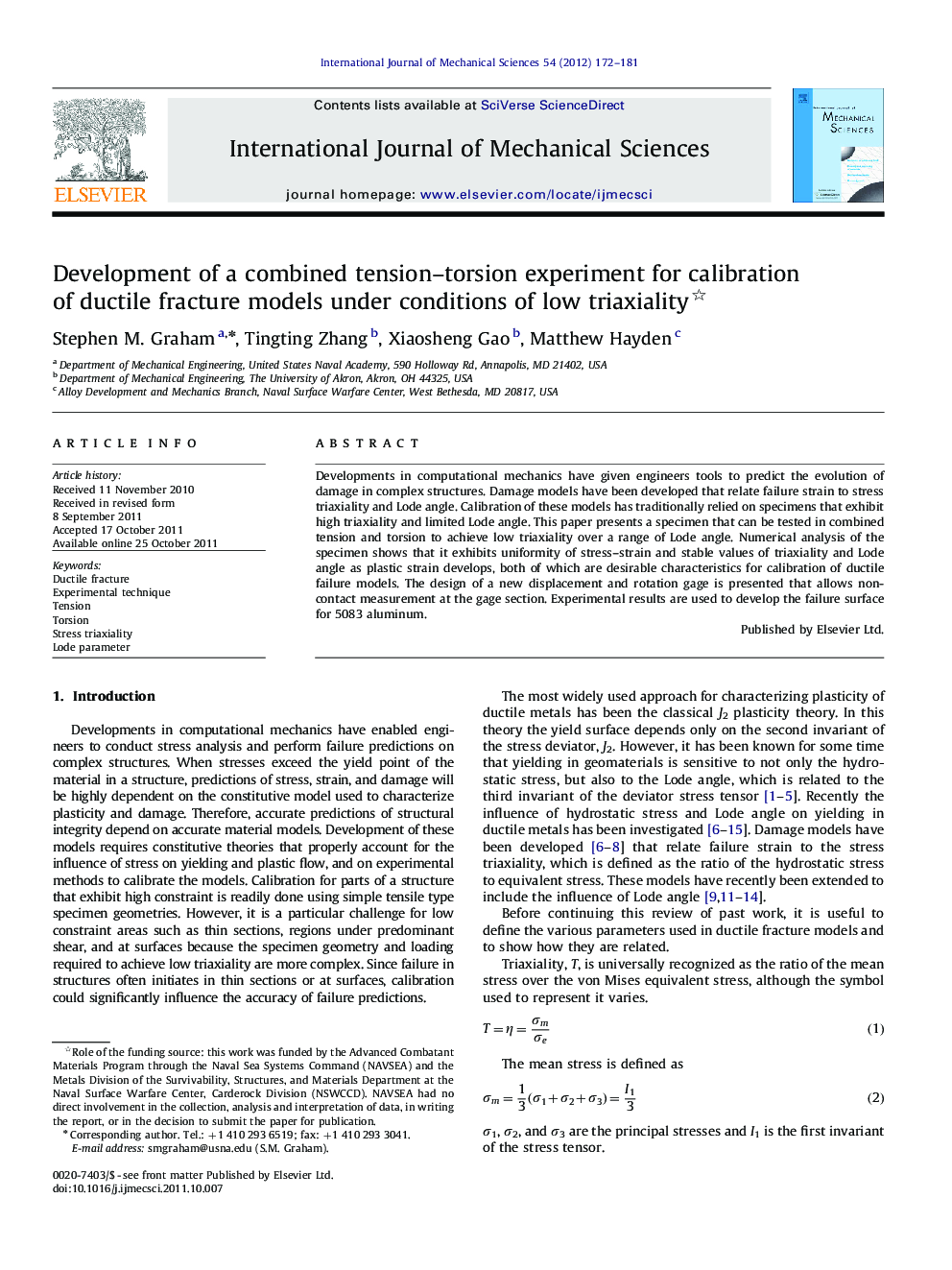| Article ID | Journal | Published Year | Pages | File Type |
|---|---|---|---|---|
| 782486 | International Journal of Mechanical Sciences | 2012 | 10 Pages |
Developments in computational mechanics have given engineers tools to predict the evolution of damage in complex structures. Damage models have been developed that relate failure strain to stress triaxiality and Lode angle. Calibration of these models has traditionally relied on specimens that exhibit high triaxiality and limited Lode angle. This paper presents a specimen that can be tested in combined tension and torsion to achieve low triaxiality over a range of Lode angle. Numerical analysis of the specimen shows that it exhibits uniformity of stress–strain and stable values of triaxiality and Lode angle as plastic strain develops, both of which are desirable characteristics for calibration of ductile failure models. The design of a new displacement and rotation gage is presented that allows non-contact measurement at the gage section. Experimental results are used to develop the failure surface for 5083 aluminum.
► Computational mechanics allows engineers to predict damage evolution in structures. ► Damage models that include effects of stress triaxiality and Lode angle are required. ► Method is presented for calibrating models at low triaxiality over range of Lode angle. ► Numerical analysis shows that specimen used in the method has desirable characteristics. ► Experimental results used to develop the failure surface for 5083 aluminum.
